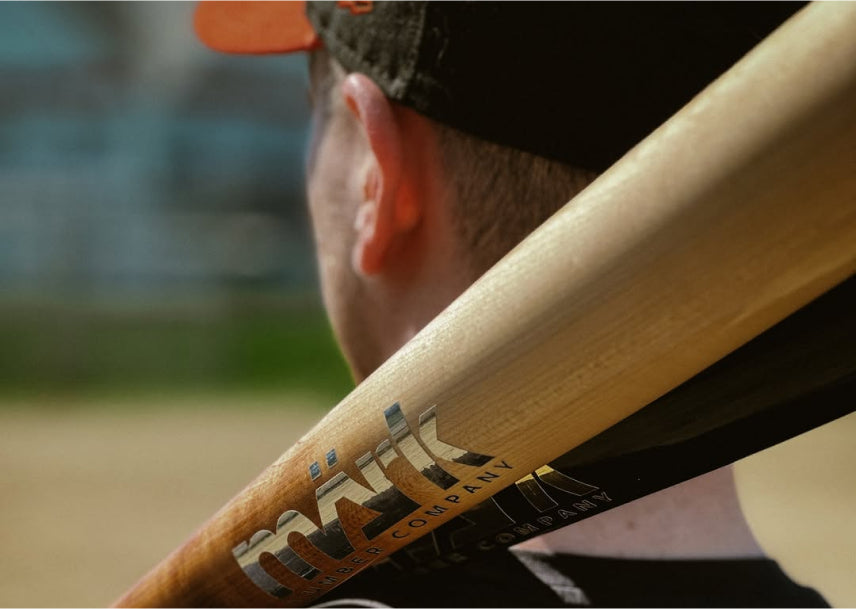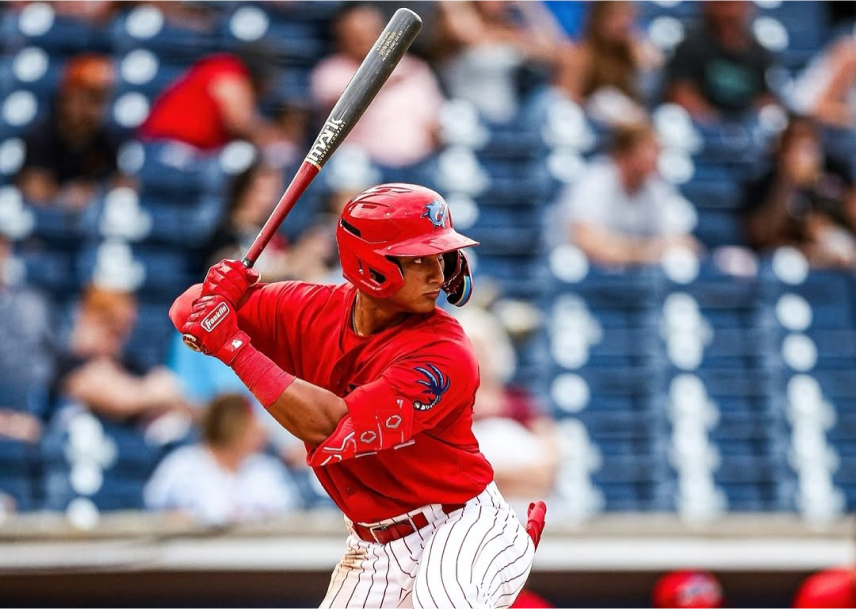
The Truth About Yellow Birch Baseball Bats and Durability
Introduction
Baseball is a game of tiny margins. A fraction of an inch on the barrel or a millisecond of hesitation can be the difference between a strikeout and a line drive into the gap. That’s why players care so deeply about their bats. Every hitter knows that the type of wood in their hands changes how the ball feels, how it sounds, and how far it travels. For years, players stuck with maple and ash. Maple gave power, but broke easily. Ash offered flex but lost its pop. Then came something different—yellow birch baseball bats.
They combine the strength of maple with the forgiving feel of ash, giving players the best of both. In this article, we’ll explore what makes birch bats unique, why they’ve earned the reputation of being among the best woods for baseball bats, and why more players are choosing yellow birch for durability and performance.
Why Yellow Birch Baseball Bats Are Gaining Ground

Baseball bats have always been about trade-offs. Maple is known for its power, but its density can make it brittle. Ash offers flexibility and a larger sweet spot, but it tends to flake and lose strength with time. This is where yellow birch baseball bats stand out.
Birch is hard enough to generate serious pop yet flexible enough to resist the sudden breaks that plague maple. Over time, the wood compresses with use, actually improving performance rather than wearing down. Players often say Birch feels like the natural bridge between metal and wood because of its forgiving barrel. That makes it especially popular among youth, college, and pro players who want the durability of maple and the playability of ash rolled into one bat.
Related: Bat Preference
Birch vs Maple vs Ash: What’s Different?
Choosing a bat is about matching performance to playing style. Each wood type has pros and cons, and understanding them helps players make better decisions.
|
Feature |
Maple |
Ash |
Birch (Yellow Birch) |
|
Hardness |
Very hard, brittle |
Flexible, flakes |
Hard + flexible |
|
Durability |
Breaks suddenly |
Loses pop over time |
Lasts longer, compresses with use |
|
Feel |
Small sweet spot |
Forgiving barrel |
Balanced, comfortable |
|
Transition From Metal |
Tough |
Easier |
Smoothest adjustment |
Birch offers a rare middle ground. It’s harder than ash but doesn’t shatter like maple. For players transitioning from aluminum bats, birch provides the smoothest adjustment because the sweet spot is forgiving yet powerful. Many players describe it as a bat that grows with you—the longer you use it, the better it feels. This is why birch is fast becoming the go-to choice for hitters seeking the best wood for baseball bats.
What Makes Yellow Birch Bats Stand Out
Not all birch bats are created equal. What sets high-quality birch apart is the attention to detail at every step of the process.
From Forest to Field
Top-grade Canadian yellow birch is harvested using sustainable forestry practices. The billets are hand-split to preserve grain strength and air-dried to the perfect moisture level. Once prepared, each piece is shaped with precision tools, ensuring consistent performance from one model to the next.
Strict Quality Control
Before reaching players, every bat undergoes multiple inspections for balance, finish, and durability. This isn’t mass production—it’s a process designed to deliver professional-grade bats every time. Many manufacturers back birch bats with warranties because of their proven reliability, a reflection of the trust players have in their durability.
Related: Baseball Bat Buying Guide
Performance Players Notice Right Away

The performance of a bat isn’t just measured in stats; it’s something players feel instantly when they swing. With yellow birch baseball bats, the difference becomes obvious after a few games.
Why Players Stick With Birch
Birch compresses with use, which means it actually gets harder and develops more pop over time. Unlike ash, it doesn’t flake. Unlike maple, it doesn’t snap in half without warning. The result is a bat that lasts longer and gives consistent results.
Player Feedback
Hitters say birch offers the right balance of forgiveness and power. Mishits don’t sting as badly, which helps players stay confident. When contact is made on the sweet spot, the ball jumps off the bat. Coaches often recommend birch for younger players transitioning from aluminum, since it provides confidence without constant breakage. It’s a wood that grows with the player, making it one of the smartest choices available.
The Birch Advantage
When you swing a yellow birch bat, you’re choosing a wood that balances power, durability, and feel like no other.
What You Can Expect:
-
Canadian yellow birch harvested responsibly
-
Custom options with colours, finishes, and engraving
-
Training bats for skill work
-
Fungo bats for coaches built with the same durability
-
Warranties that reflect confidence in durability
This combination of durability, playability, and confidence is why more players are turning to birch. Its mix of power and forgiveness makes it a standout option for hitters at every level, from youth leagues to the pros.
Explore: Customize Your Bat
The Future of Birch Bats
The debate between birch vs maple bats isn’t going away. Power hitters who like stiff, heavy bats may still prefer maple. Players who love flexibility might stick with ash. But the rise of Birch proves there’s room for something better balanced.
As more players swing birch, they discover bats that don’t just last but improve with time. This reliability is why birch is increasingly seen as the best wood for baseball bats—not just an alternative. The future of birch looks strong, and its reputation continues to grow as more hitters experience the advantages firsthand.
Yellow Birch at Mark Lumber
Yellow birch changed the conversation around wood baseball bats. Players wanted a barrel that felt lively without being brittle, and a handle that stayed confident through contact. That’s exactly where yellow birch shines: it pairs real pop with a touch of flex, so mishits don’t sting and squared-up balls jump. As more hitters put birch in play, they discover a balanced swing weight that feels natural in the hands and a barrel that actually gets better as it compresses with use.
How We Craft Yellow Birch Bats
We start with responsibly sourced Canadian yellow birch and select pro-grade billets for straight, tight grain. Billets are prepared to optimal moisture, then turned with precision for model-to-model consistency. Each bat is finished, balanced, and inspected multiple times for feel, durability, and a clean surface that showcases the grain. The result is a yellow birch wood baseball bat built to perform day after day—backed by our 45-day warranty for peace of mind.
FAQs
1- Are birch bats more durable than maple?
Yes. In the context of birch vs maple bats, birch bat durability generally comes out ahead because birch blends hardness with a touch of flex. Maple is extremely hard—great for energy transfer—but that same density can make it brittle, so failures often happen suddenly and completely. Yellow birch baseball bats absorb impact a bit more, distributing stress along the grain instead of concentrating it at a single weak point. That slight give helps resist catastrophic breaks while still producing serious pop. In regular training and game use, many hitters find that a well-made birch bat maintains performance longer and survives off-center contact better than maple. With proper care—avoid extreme temperatures, rotate the label, store dry—premium birch can outlast comparable maple models, which is why players increasingly rank birch among the best woods for baseball bats for both reliability and value over a season’s grind.
2- Do birch bats get better with use?
Yes—and that “break-in” is a defining advantage of yellow birch baseball bats. With repeated contact, birch fibers compress microscopically, tightening up the barrel and creating a livelier, more responsive hitting surface. Think of it as performance that matures: the more quality swings you take, the more consistent the rebound becomes. Unlike ash, which may flake and lose integrity, or maple, which can stay rigid yet risk abrupt failure, birch evolves in a positive direction as you log at-bats. That progressive feel is central to birch bat durability because compression also reduces the chance of sudden fractures. For hitters comparing birch vs maple bats, this improvement over time is a big reason birch is often considered among the best woods for baseball bats. Maintain good habits—rotate the hitting surface, keep it dry, avoid cold-weather overuse—and you’ll notice the barrel’s pop and feedback sharpen across practices and games.
3- Is birch good for beginners?
Absolutely. For players moving from alloy to wood baseball bats, yellow birch baseball bats offer a forgiving path that builds confidence fast. The barrel’s slight flex reduces sting on mishits, while the inherent hardness still delivers satisfying exit speeds when you square up. In the birch vs maple bats decision, maple’s stiffness can punish timing mistakes; birch gives developing hitters a touch more margin for error without feeling “dead.” That combination helps newcomers' groove mechanics: better feedback, less vibration, and a smoother learning curve for barrel control. Coaches appreciate how birch encourages repeatable swings and keeps practice productive rather than discouraging. Durability matters for beginners too—birch’s resilience under frequent cage work means fewer equipment setbacks. Add in the way birch “comes alive” as it compresses, and you get a bat that grows with the player. These traits make birch a staple recommendation when choosing the best wood for baseball bats for early development.
4- How long do birch bats last?
Longevity depends on usage and care, but yellow birch baseball bats routinely deliver excellent service life. Birch’s micro-flex helps dissipate impact forces, so instead of a sudden snap, you get a barrel that hardens steadily through compression. Compared with ash, birch avoids flaking; compared with maple, it’s less prone to abrupt breakage, particularly during heavy practice cycles. To maximize birch bat durability, store the bat at room temperature, keep it dry, rotate the label during use, and avoid hitting waterlogged or heavily scarred balls. Many hitters report months—or an entire season—of consistent performance from one bat with good habits. If you’re weighing birch vs maple bats, birch often provides the best balance of lifespan and playability, which is why it’s frequently chosen as one of the best woods for baseball bats for everyday training and game play. In short: care well, swing smart, and Birch will go the distance.







